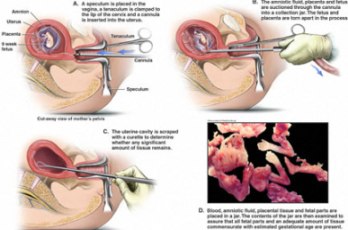Dilation and curettage is the procedure, also called as D&C. D means dilation, which is enlarging and C means curettage, which means scrapping.
Mainly, this procedure consists of enlarging or expanding the entrance of the uterus to insert the sharp instrument in order to take out the tissue samples.
This is a regularly used procedure and is considered as safe. This is a therapeutic gynecological procedure and also a rarely used procedure in first trimester abortion. This is an adjunct procedure to hysteroscopy and polypectomy.
Dilation and curettage procedure:
The first and the main step in dilation and curettage procedure is to dilate the cervix. Usually, this is performed a few hours before the surgery. Before the procedure, you are administered with general anesthesia.
After this, a metal rod with one handle on one end and with a sharp loop on the other end is inserted into your uterus through the dilated cervix.
Generally, the curette is used to smoothly scrape the lining of the uterus and remove the tissues from uterus. This tissue is examined for completeness in the case of miscarriage or abortion treatment or for detecting any other abnormalities.
Dilation and curettage is used for:
Irregular bleeding: D&C is used to detect the cause behind irregular bleeding. Usually, you can experience irregular bleeding along with spotting between the periods. If the spotting continues, then your practitioner performs the dilation and curettage to detect the causes.

Heavy bleeding: Heavy periods, bleeding for longer time and bleeding even after the menopause can indicate various problems. Your doctor tries to detect the cause with the help of hysterectomy.
Polyps and fibroids: These are the most common conditions in women. Sometimes, fibroids lead to heavy bleeding and chronic pain. Cervical Polyps are the most common causes of heavy bleeding.
Uterine fibroid and polyps have the symptoms that resemble the most serious causes of heavy bleeding.
Endometrial cancer: Everyone will be afraid with the word cancer, particularly when it is said about you. Hysteroscopy and dilation and curettage are performed to make sure your signs are not caused by uterine cancer.
Therapeutic D&C: Usually, D&C is planned as the treatment when the cause of the problem is already well known. Incomplete miscarriage is one among those situations. At this time, the doctor considers D&C to remove the remaining tissues.
The risks associated with dilation and curettage:
- If the instrument inserted in your uterus injures the adjacent walls, then heavy bleeding occurs. But, this is a very rare condition. The walls of the uterus will also be damaged if an undetected fibroid is cut during the process.
- Always there is some possibility for infection after inserting any type of instrument in your uterus. Antibiotics can help in treating the infection most of the times. But, some infections will become very serious and they need doctor’s assistance.
- If you have uterine infection at the time of the process for a miscarriage or if you are an elderly postmenopausal woman, then there is a chance for perforated uterus.
- Abnormal reaction to the scraping can lead to Asherman syndrome. This condition leads to the formation of scar tissues in your uterus.
So, before going to consider this procedure, it is better to consult your doctor to know about the possible benefits and risks associated with the procedure.



